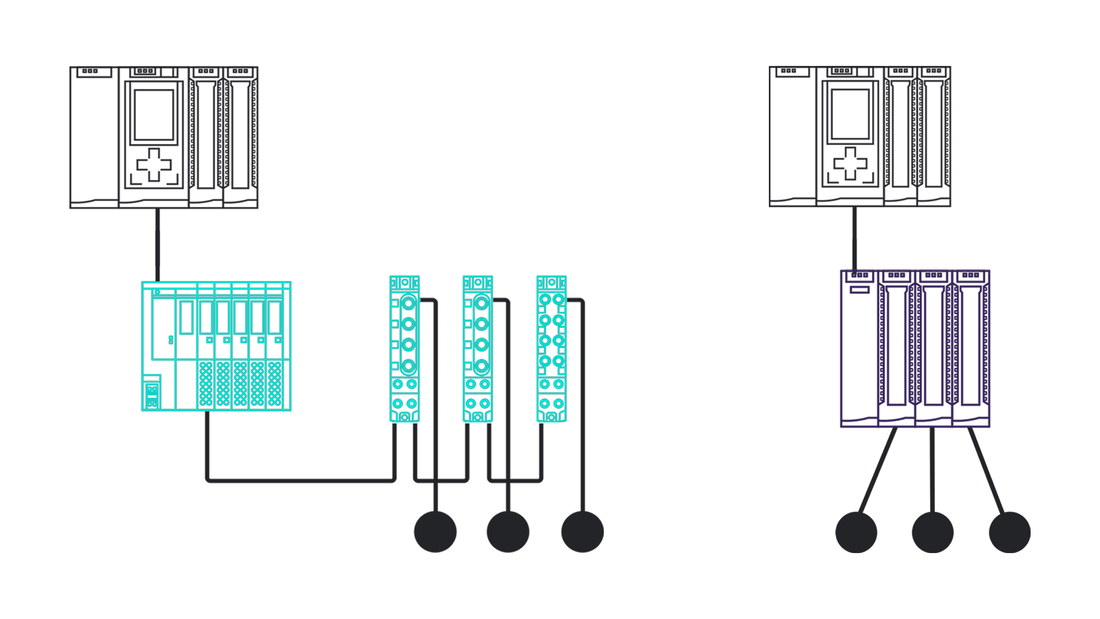
Navigating the Evolution of Distributed I/O Systems: Trends and Innovations
Share

Introduction
The rapid pace of technological advancement is reshaping industries across the globe, and distributed input/output (I/O) market are at the heart of this transformation. As industries adopt automation, real-time analytics, and Industry 4.0 technologies, distributed I/O systems are becoming indispensable for enabling efficient data acquisition, processing, and control in distributed environments.
For investors, the growth and evolution of the distributed I/O market represent a compelling opportunity to capitalize on emerging technologies that are redefining industrial processes. This blog explores key trends and innovations driving the future of distributed I/O systems, highlighting their transformative potential.
Key Trends Shaping the Distributed I/O Market
1. Integration of the Industrial Internet of Things (IIoT)
The Industrial Internet of Things (IIoT) is a catalyst for exponential growth in the distributed I/O market. IIoT enhances operational efficiency by seamlessly connecting devices, sensors, and systems, enabling real-time data acquisition and predictive maintenance.
· Example in Action: In January 2023, Rockwell Automation introduced the ThingWorx IIoT platform, leveraging distributed I/O systems to monitor real-time data, predict maintenance needs, and drive data-driven decision-making.
· Investor Takeaway: IIoT integration positions distributed I/O systems as essential components for optimizing industrial processes and reducing downtime, paving the way for more efficient and agile operations.
2. The Rise of Edge Computing
Edge computing is redefining data processing by bringing computation closer to data sources. This shift reduces latency, accelerates decision-making, and enhances system performance, particularly in industries like manufacturing and autonomous vehicles.
· Example in Action: In May 2023, Dell launched an edge computing platform that harnesses distributed I/O systems to enable real-time data processing and decision-making.
· Investor Takeaway: Edge computing is a cornerstone of Industry 4.0, and its integration with distributed I/O systems unlocks new efficiencies, making this trend a significant investment opportunity.
3. Wireless Connectivity for Seamless Deployments
Wireless communication protocols such as Wi-Fi, Bluetooth, and LoRaWAN are revolutionizing distributed I/O systems by eliminating complex wiring and enabling flexible, cost-effective installations.
· Example in Action: In July 2021, Advantech launched a dual-band industrial Wi-Fi I/O module in collaboration with Microsoft Azure Sphere, simplifying deployment and enhancing connectivity.
· Investor Takeaway: Wireless connectivity aligns with the broader IoT ecosystem, offering scalable and efficient solutions for industries undergoing digital transformation.
Future Innovations Driving the Distributed I/O Market
1. Artificial Intelligence (AI) and Machine Learning (ML) Integration
AI and ML are set to revolutionize distributed I/O systems by enabling real-time, intelligent decision-making and predictive maintenance. These technologies optimize operations, enhance product quality, and reduce waste.
· Applications:
o In manufacturing, AI-driven distributed I/O systems can adapt settings dynamically to improve efficiency.
o In autonomous vehicles, real-time decision-making becomes more precise, ensuring safety and performance.
· Investor Takeaway: The fusion of AI and ML with distributed I/O systems represents a leap toward intelligent and self-improving industrial processes, offering a lucrative avenue for growth.
2. The Game-Changing Potential of 5G Connectivity
The rollout of 5G networks unlocks unprecedented possibilities for distributed I/O systems. With ultra-low latency and high bandwidth, 5G enables instantaneous data exchange and seamless integration with AI and ML technologies.
· Applications:
o Predictive maintenance in manufacturing.
o Precision agriculture with real-time monitoring and control.
o Autonomous vehicles relying on rapid decision-making capabilities.
· Investor Takeaway: The synergy between 5G and distributed I/O systems creates new opportunities for innovation across industries, making it a pivotal trend to watch.
Conclusion
Distributed I/O systems are at the forefront of industrial innovation, driving efficiency, reducing costs, and enabling data-driven decision-making. Key trends like IIoT integration, edge computing, and wireless connectivity are reshaping the market, while future innovations such as AI/ML integration and 5G connectivity promise transformative potential.
For investors, the distributed I/O market represents a dynamic and high-growth opportunity. As industries continue their digital transformation journeys, distributed I/O systems will play an increasingly vital role in building smarter, more efficient, and adaptive ecosystems.